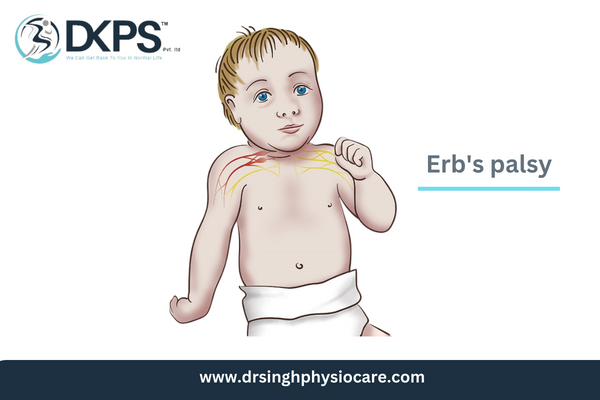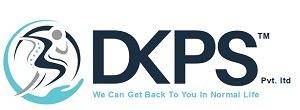- Home
- About Us
- DKPS Dealing
- BLOG
- Delhi NCR
- Delhi
- Physiotherapy at Home Near Me | Physiotherapist in South Delhi
- Best Chiropractor in Delhi
- Physiotherapist in Delhi
- Cupping Therapy in Delhi
- Home Nursing Services in Delhi
- Needle Therapy for Back Pain
- Sports Injury Physiotherapy
- Best Physiotherapist Visit at Home in Rohini Sector 24
- Physiotherapy at Home In Rohini Sector 9 |
- Physiotherapist in Pitampura | Physiotherapy at Home in Pitampura
- Physiotherapy at home in Rohini sector 29
- Physiotherapist in Paschim Vihar
- Physio home visit | Home Visit Physiotherapy |
- Physiotherapist in Saket | Best Physiotherapist in Saket |
- Physiotherapist In Janakpuri | Best Physiotherapist in Janakpuri |
- Best Physiotherapist in Punjabi Bagh | Punjabi Bagh Physiotherapist |
- Best Physiotherapist Service at Home in Dwarka, Delhi
- Best Physiotherapist in Chandigarh at Home Visit
- Faridabad
- Gurugram
- Noida
- Best Physiotherapy Gorakhpur
- Best Physiotherapist in Lucknow | Physiotherapist in Lucknow near me |
- Delhi
- Mumbai
- Delhi NCR
- Department
- Doctors
- Gallery
- Packages
- Contact Us
Archives
- Home
- Archives

Erb’s palsy Introduction :
Erb’s palsy :
Erb’s palsy a disorder caused by brachial plexus injury after childbirth. Erb’s palsy most commonly affects the muscles and nerves in the shoulder and upper arm, resulting in paralysis and reduced range of motion. Physical therapy tries to increase the damaged arm’s strength, mobility, and function.
Here are some important components of Erb’s palsy physical therapy:
1. Early Intervention:
To maximize the chances of a successful recovery, physical therapy should begin as soon as possible, frequently within the first few weeks to months after delivery.
2. Evaluation: The physical therapist will evaluate the baby’s condition to determine the level of muscular weakness, joint contractures, and any other abnormalities.
3. Range of Motion activities: The therapist will use mild stretching activities to improve the baby’s range of motion in the afflicted arm and shoulder.
4. Strengthening Exercises: To assist the baby gain muscle strength in the afflicted arm, gradual strengthening exercises are introduced. These exercises are designed to strengthen the shoulder, elbow, and hand muscles.
5. Passive Range of Motion: Passive range of motion exercises may be helpful in specific circumstances. To prevent joint contractures, the therapist gently moves the baby’s arm and shoulder through their complete range of motion.
6. Positioning and Handling: Parents and carers are taught suitable positioning and handling practices in order to prevent additional injury and encourage optimal growth of the afflicted arm.
7. Functional Training: As the baby grows, therapy will focus on functional skills including reaching, gripping, and playing to help them use the afflicted arm in daily duties.
8. Parental/Caregiver Involvement: Parents and carers play an important part in recovery. They are frequently given exercises and directions to help them continue their therapy at home.
9. Orthotic Devices: In some circumstances, orthotic devices such as splints or braces may be advised to help maintain appropriate arm placement.
10. Adaptive Equipment: Adaptive equipment, such as modified utensils or tools, may be introduced to aid with daily duties depending on the severity of the condition.
11. Progress Monitoring: The physical therapist will analyze the baby’s progress on a regular basis and change the therapy plan as needed.
12. Surgical Considerations: In extreme cases, surgical intervention to restore injured nerves or muscles may be required. Physical therapy is frequently an important part of the post-surgery rehabilitation process.
It is vital to note that the precise physical therapy plan will be adapted to the baby’s individual demands and condition. To guarantee the greatest potential outcome for the child’s rehabilitation, parents and carers should collaborate closely with healthcare professionals and therapists. Early intervention and continuous therapy can considerably improve children with Erb’s palsy’s long-term prognosis.
Erb’s Palsy, also known as Brachial Plexus Birth Palsy, is a neurological disorder that affects the shoulder and upper arm. It is usually caused by a brachial plexus injury during labour. The brachial plexus is a network of nerves that regulates the shoulder, arm, and hand muscles.
Symptoms: Erb’s Palsy symptoms can range in intensity and may include:
1. afflicted arm weakness: The youngster may have limited movement and difficulties using the afflicted arm.
2. Muscle floppiness or underdevelopment: Muscles in the afflicted arm may be floppy or undeveloped.
3. Limited range of motion: The youngster may struggle to move his or her arm and shoulder through their complete range of motion.
4. Arm held near to the body: With the elbow bent and the hand turned inward, the affected arm can be held against the body.
Erb’s Palsy is primarily caused by brachial plexus nerve injury after childbirth. This injury can happen for a variety of reasons, including:
– Shoulder dystocia: When a baby’s shoulder becomes trapped behind the mother’s pelvic bone during labour.
– Excessive pulling: When a healthcare provider applies undue pressure to the baby’s head and neck during delivery.
– Breech birth: When a baby is born feet-first or buttocks-first, the risk of brachial plexus injury increases.
– Large infant: A newborn with a high birth weight is more likely to develop Erb’s Palsy.
Treatment:
Erb’s Palsy treatment often entails a multidisciplinary approach and may include:
1. Physical Therapy: Physical therapy is an important part of the treatment process. It aims to improve the affected arm’s range of motion, strength, and function.
2. Occupational Therapy: Occupational therapists work with children to help them develop the fine motor skills required for daily tasks like feeding, dressing, and writing.
3. Surgery: In extreme situations with considerable nerve damage, surgical intervention to repair the nerves or transfer healthy nerves from other parts of the body may be required.
4. Braces and Orthotics: Orthotic devices, such as splints or braces, may be used to help the affected arm maintain appropriate alignment.
5. Medications: Pain or muscle spasms may be treated with medications.
6. Regular Follow-up: Children with Erb’s Palsy need to see their doctor on a regular basis to assess their development and make any required changes to their treatment plan.
7. Home Exercises: Exercises and directions to continue therapy at home are frequently given to parents and carers. Consistency with these workouts is critical for the child’s development.
8. Depending on the child’s individual needs, adapted equipment such as modified utensils, tools, or clothing with easy closures may be prescribed to aid with daily activities.
9. Educational assistance: Erb’s Palsy children may benefit from educational assistance programmes to ensure full participation in school activities. This may include adaptations to the curriculum, accommodations, or assistive technology.
10. Psychological Support: Coping with a physical impairment can be difficult for both the child and their family. Counselors or support groups can provide psychological assistance in resolving any emotional or social difficulties.
11. Long-Term Prognosis: The prognosis for Erb’s Palsy varies. Many youngsters benefit significantly from early and appropriate treatment. Some people, however, may experience long-term weakening or restrictions in the affected arm.
To lessen the risk of Erb’s Palsy, healthcare providers should be taught safe delivery practices to reduce the chance of brachial plexus injuries during labour. If there is a high probability of shoulder dystocia, a caesarean section may be indicated in some circumstances.
Parents and carers of children with Erb’s Palsy must collaborate closely with healthcare specialists, particularly physical and occupational therapists, to develop a customized treatment plan that addresses the child’s specific requirements and challenges. Early intervention and a comprehensive approach to care can improve the child’s quality of life and functional outcomes dramatically.
Erb’s Palsy has a variable prognosis based on the severity of the lesion and the efficiency of treatment. Many children with Erb’s Palsy improve with time and therapy, but some may have long-term arm function issues. For the greatest potential outcome, early intervention and a comprehensive treatment plan are essential. The prognosis may also be altered by the individual nerves and tissues involved, as well as whether surgical intervention is required.
In conclusion :
In conclusion, Erb’s Palsy, also known as Brachial Plexus Birth Palsy, is a disorder caused by nerve damage after childbirth that affects the muscles and movement of the shoulder and upper arm. Symptoms might range from weakness and restricted range of motion to severe functional impairments. For the greatest possible outcomes, early intervention and a comprehensive treatment plan are required. Physical therapy, occupational therapy, prospective surgical procedures, and assistance from a variety of healthcare experts are frequently used in treatment.
By following the advice of healthcare specialists, conducting activities at home, and providing emotional support to the kid, parents and carers play an important part in the recovery process. While the prognosis varies depending on the severity of the ailment and the efficiency of treatment, with the correct care and support, many children with Erb’s Palsy can achieve considerable improvements in arm function and overall quality of life.
Preventing Erb’s Palsy through safe delivery practices is also important in lowering the risk. Healthcare providers should be trained to reduce the risk of brachial plexus injuries during labour, and alternate delivery methods such as caesarean sections may be considered in some circumstances to reduce the chance of shoulder dystocia.
Overall, a collaborative and comprehensive approach involving healthcare experts, parents, and carers is critical to assisting children with Erb’s Palsy in reaching their full potential and living satisfying lives.
More Popular Articles :
DKPS Physiotherapy at home services available in location :
DWARKA | PASCHIM VIHAR | PEERAGARHI | PITAMPURA | ROHINI |
NOIDA | GREATER NOIDA | GHAZIABAD | MUMBAI | LUCKNOW | GUWAHATI | GURGAON | FARIDABAD |
Additional Links
For More Articles
DKPS Physiotherapy services at Home
Contact Us
- Rohini sector 25 pocket 1 plot 136
